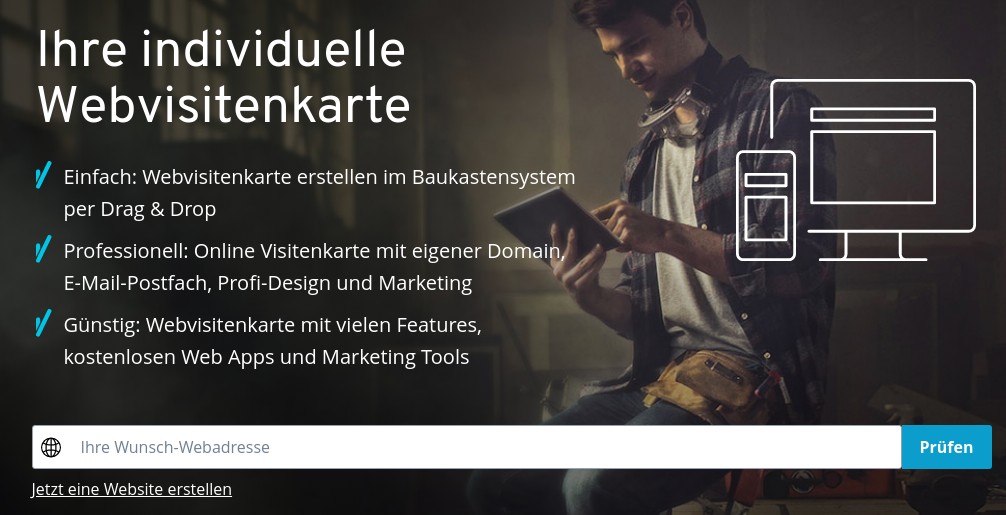7 Facts about SEO and SEM to know as Online Store Owner
Search Engine Optimization and Online Marketing
“How do I get to the top of Google?”
A simple question without a simple answer.
“How do I get to the top of Google?”
Unfortunately, I have lost count of how many times I have been asked this question. As simple as it may seem, there is a complex subject behind it: There are over 200 Ranking Factors that influence your position in Google. I will try to explain the basics here and show some approaches that are within the realm of possibility for any small business.
SEO – Search Engine Optimization
SEO – Search Engine Optimization
Search engine optimization is a topic that played a big role in the early days of Google and even before that. Nowadays, SEO still plays a role. However, the possible optimizations are less technical than 15 years ago.

An example here is to add titles to images that are shown on the website as shown on the right.
Search engines can thus match the content of an image. However, some optimizations have been used by webmasters to mislead the search engine.
For example, it was possible to advertise “free trip” and actually present completely different content to website visitors, such as life insurance or the like.
1. SEO Changes
There are still optimizations that should be carried out.
For example, file names (or the paths of content pages) can be constructed in a speaking way:
domain.com/new-house-paint-new-york.html

Overall, the “over-optimization” of the website has lost some of its value as search engines become more “intelligent” and better understand websites, their structures, and intentions.
Websites should be created for people, not for search engines
Google is constantly working to improve its own algorithms and even Matt Cutts pointed out that Webmasters should Optimize their Websites for people, not for Search Engines.

In addition, most search engines now incorporate many other ranking factors into the order of search results, so that specific optimization has very little impact.
2. Optimize Locally and Regionally
However, I would like to emphasize one point here that is especially interesting for small, regional businesses such as craftsmen or local service providers: Optimize locally and regionally so that you can be found when someone in the next town searches for your service without knowing your name.
One client – a driving school from the region – for whom I implemented successful online marketing, only wanted driving students and inquiries from the surrounding towns.
3. Website Technology Update
Another example that I have seen more often in customer projects is the complete redesign of the entire website. In most cases, the online store was very much outdated, and with the migration to a mobile-first online store and short loading times alone, very good results can be achieved.
One example of this was a project with a small delicatessen grocer with a web store. Originally, three orders per week came through the website. With a new website, mobile-first, and new images (same products, same texts) there were 3 orders per day directly after the relaunch.
Work with and on your website
The website is a web business card. Unfortunately, still very popular with many large web hosts.

A website as a business card. In other words, something that is handed over once at an event and then, in the best case, put in a business card box or actually put into a system – such as CRM or cell phone transmits. Static information can be forgotten directly after it has been used once.
If you want your store and website to be found, if you want to generate prospects and customers through your web store and website, then a web business card is not the right thing.
4. Content is King
If you don’t have a budget for a marketing department and don’t want to spend anything on an external agency, but still want to be found well through your website, focus on posting something on your website one or more times a week. New reference projects, FAQs you collect from phone inquiries, new legal guidelines that need to be met, etc.
It should be interesting for potential customers.
A blog with two articles per year – once for company vacations and once for Christmas – certainly counts as rather boring.
If you have the budget for marketing, you should invest a large part in content marketing if that fits your product. In principle, this is the activity just described further thought and structure. This is where content or publishing plans are developed. Ideally, articles and content will have a tracking pixel so that interest can be measured. Also, where clever ideas for campaigns come into play, and again these campaigns should be measured in order to measure the ROI – Return on Investment – to be able to determine
5. Link Building
You need links that lead to your website. Given you take care of your website without a budget for marketing as just described, you surely have acquaintances, relatives, business partners, or even colleagues from another region of the German-speaking Internet with whom you can exchange links.
When it looks “natural”, then search engines will recognize and honor it.
Allowing you have a budget available, it makes sense to spread the effort a bit wider. Ideally, something will happen on your website and from you on the Internet almost every day:
New articles, photos, guest posts, social media, new links, a story in the local paper, etc.
Activities should be measured here. So you need a catalog of the activities performed as well as their results.
SEO is a process, a marathon, not a sprint
All the measures listed here and exercised within this framework will help your website achieve a good position in search results in the medium and long term. If you want to tackle these measures in your company, you should see the whole thing as a marathon and not a sprint.
SEM – Search Engine Marketing
SEM – Search Engine Marketing, Placing Advertisements Online
All the marketing measures mentioned so far can be carried out by a small company on its own without any major financial outlay.
An entirely different approach is advertising also known as SEM – Search Engine Marketing.
A customer with a product in the skincare sector uses this method very successfully: The company has an advertising budget of about 2000$ every month, which is completely invested in Google Adwords. The turnover from these monthly campaigns is then about 8000$ per month.
6. SEM for Short-term Results
SEM can lead to good sales within a few hours or days, even for a new website.
Ad management is not difficult but can become complex:
Possibly there are several product lines with different keywords in your online store. These could still be dependent on the season.
Each keyword must be checked for search intent (does the person who entered this keyword want to buy something or just find information?).
This all needs to be taken into account and then keywords need to be measured against each other (for example in A/B tests to find out which conversion rate is higher) and this needs to be documented to increase the ad budget for the best keywords.

7. SEM
Technically, online advertising can certainly be done by yourself and is not much more complex than installing and optimizing an online store by yourself.
However, the effort involved is quite high. This can not be done in every small company itself. Above all, it is important to continuously test and improve your advertising. This costs time.
If you are looking for an external service provider here, be sure to clarify which criteria you can use to measure the success of the service provider.